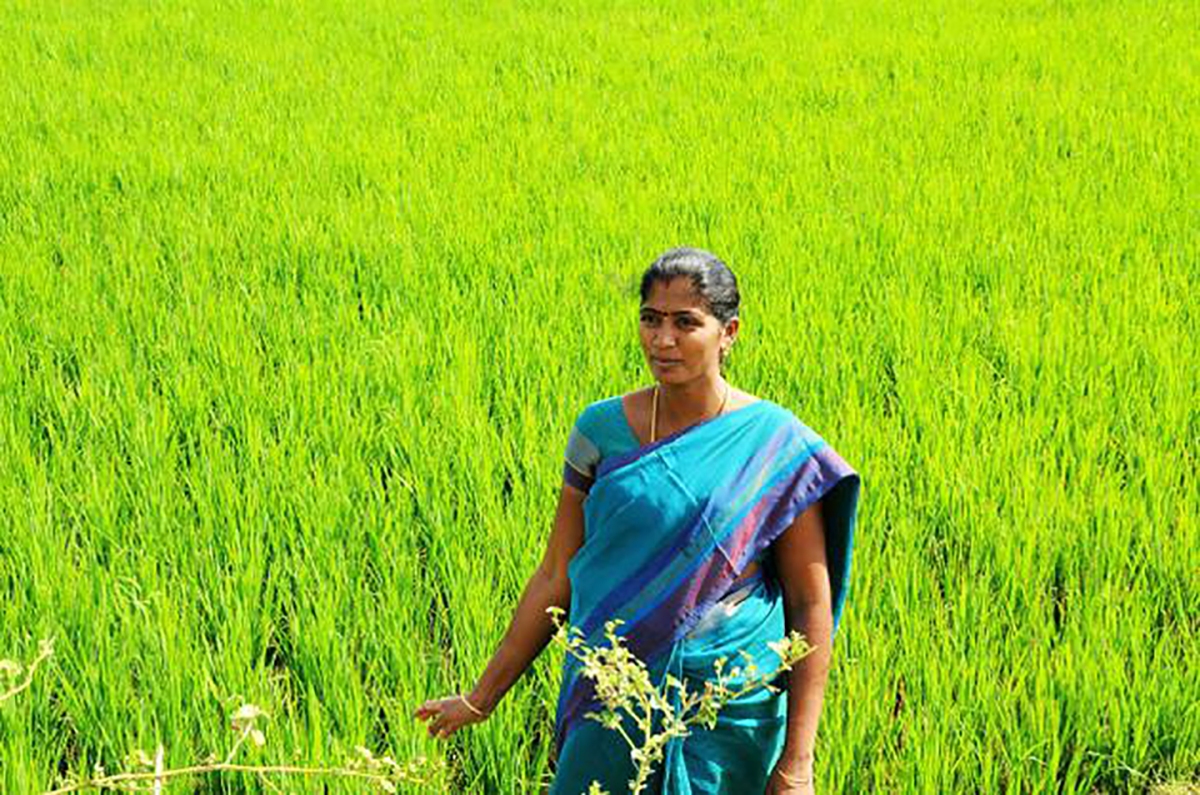Sowing the Seed of Hope
(From The Hindu Times)
Winner of the State Award in Agriculture, 32 years old P. Prasanna is a role model for women aspiring to become farmers
From an unknown entity, P. Prasanna has now become a household name in the tiny Tiruppalai Village after she rose to fame bagging Tamil Nadu Chief Minister’s Special Award this year for her achievement in agriculture. She recorded high yield of paddy through ‘semmai nel sagupadi’ (System of Rice Intensification).
She reaped 3,223 kilos of TRY 3 variety of paddy with just two kilos of the seed planted in 50 cents in 130 days. It was the highest yield adopting SRI method in the State for 2014-15. The award carried Rs.5 lakhs cash and a medal.
Women involved in farming activities is nothing new but there are only handful of them who are farmers. Though 75 percent of the agriculture work from sowing seeds to planting saplings, removing weeds and harvesting paddy are done by women, not many go on to become a farmer. “They find it difficult to balance between household duties and field work,” says Prasanna, “but what they miss here is just little knowledge about technical inputs in agriculture and expertise in man management. I focussed on these points and that stood me in good stead,” says Prasanna.
Hailing from Kancharampettai Village on the periphery of Madurai, Prasanna’s interest in agriculture is deep rooted as her father is also a farmer. “My father used to take me to the farms when I was young and involve me in every activity from performing rituals to sowing the seeds and harvesting the crop. It motivated me and I made it a habit to visit the fields. It continues even now,” says Prasanna, who is also working as science teacher in a private school.
Married to a peasant M. Padmanaban of Tiruppalai Village, she was able to protect her interests in agriculture. The Chief Minister’s Award for farmers inspired her and knowing her interest the agriculture department encouraged her to enrol for it.
“I visited the agriculture research centre in Thanjavur and got the TRY 3 variety. I sowed the seeds in around 50 cents of land in Chinnapatti near Chathirapatti Village. I used natural fertilisers in strict compliance with the Government guidelines. At every stage, adjudicators from the department visited my farm to record the growth. Even the colours of the leaves were noted down by the officers and they sounded positive. The success behind the high yield was the space I left between two saplings. The 22.5 cm space on all sides ensured sufficient sunlight. Water requirement is also less in this method. Finally, I harvested in February 2015. On that day itself the officials sealed all the grains and took them to the godown. Only a week before this Republic Day I got the information from the department that I have won the award. My four-year long dream came true,” she beams.
Prasanna has made it into a practice to visit the field every morning and evening and full day during weekends. She regularly updates herself and tries to implement innovative methods. She also evinces keen interest in terrace gardening. “Now, I am planning to use drip irrigation in sugarcane cultivation. Not many in my area have attempted this method. Hope I get the desired results,” she says.

